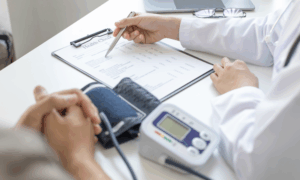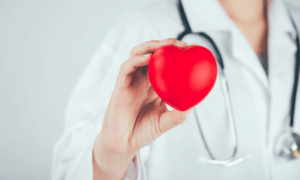| STT | LIST | DETAILED CONTENT |
|---|---|---|
| 1 | Doctor's examination | Review medical history, current medical condition, health concerns to personalize tests and imaging according to each person's specific problems. |
| 2 | Vital signs | Weight, height, pulse, blood pressure, BMI, vision. |
|
3
|
Blood test:
– Blood formula – Blood fat Blood sugar Liver enzymes – Kidney function – Screening for hepatitis B and C – Gout index – Thyroid function test |
Blood Formula: 1) Provide information about the three main types of blood cells: – Red blood cells: Measuring the number of red blood cells in the blood helps detect anemia. Regarding anemia, the following indicators also help to better assess the level of anemia and the cause of anemia: Hemoglobin (Hb): Measures the amount of hemoglobin in the blood, Hematocrit (Hct): Measures the percentage of red blood cells in the blood, MCV, MCH, MCHC: evaluates the average volume of red blood cells, average amount of hemoglobin, average hemoglobin concentration. – White blood cells: Measures white blood cell count, which helps detect infections, immune diseases, or hematological disorders. – Platelets: Measuring platelet count helps to partially assess blood clotting status and detect platelet-related disorders. 2) Thanks to detailed information of blood cell components, doctors can diagnose early diseases of the hematopoietic system such as anemia, leukemia, thrombocytosis or give early warning of other inflammatory diseases. |
| Blood Fat: 1) The blood lipid test kit includes 4 basic parameters with different health meanings: Total cholesterol, triglyceride, HDL-cholesterol, LDL-cholesterol. Things to remember: – HDL cholesterol: Not all types of cholesterol are dangerous. For example, HDL-cholesterol, which is a beneficial blood fat, “GOOD” fat, helps you prevent cardiovascular disease. Some foods that promote the production of HDL-cholesterol include: oats, fish, nuts – LDL cholesterol: is a “BAD” fat, increasing the risk of atherosclerosis, cardiovascular disease and stroke. Some foods that increase LDL-cholesterol: cheese, fried foods, foods with a high glycemic index, animal fat, red meat, etc. – Triglycerides: This is a form of body fat that is linked to heart disease and diabetes. Triglycerides levels can increase due to factors such as obesity, smoking, alcohol consumption, a diet rich in carbohydrates, lack of exercise, etc. 2) Understanding the basic information of blood lipid indexes helps you have knowledge in screening cardiovascular risks. It should be known that currently, about 150,000 people die from heart disease, which is both a symptom and the most serious complication. About 41% of deaths are due to myocardial infarction. |
||
| Blood Sugar: 1) Understanding the meaning of blood sugar index helps you understand about Diabetes screening. 2) Diabetes can be detected early by examining the following blood test indicators: 3) Once you have your blood sugar information, you can learn how to adjust your diet and lifestyle habits in addition to medication (if any), to help prevent the disease as well as minimize complications of diabetes. |
||
| Liver Enzymes ALT, AST, GGT are 3 indexes often prescribed by doctors to initially assess liver condition. – ALT and AST: Measure the levels of these enzymes to assess liver inflammation or damage. – GGT: in addition to causes such as diseases that damage the liver and biliary system, GGT is also related to lifestyle factors, diet, etc., for example: drinking beer, alcohol, using drugs, diet, fatty liver, etc. |
||
| Kidney Function: 1) The most commonly used index to assess initial kidney function is Creatinine. 2) From this index, doctors can estimate the glomerular filtration rate (roughly speaking, it measures the ability to filter out toxins and waste from the body). 3) If necessary, the doctor may prescribe more in-depth tests such as 24-hour urine protein, total protein, ionogram, abdominal ultrasound, etc. |
||
| Screening for Hepatitis B, C: 1) Xét nghiệm máu giúp tầm soát tình trạng nhiễm các virus viêm gan thường gặp nhất: virus gây viêm gan B, C. Đây là các virus có thể dẫn đến viêm gan mạn, xơ gan và thậm chí ung thư gan. 2) Từ kết quả của các xét nghiệm này, bác sĩ tiếp tục tư vấn tiêm ngừa vaccine (đối với viêm gan B), hướng dẫn các biện pháp phòng ngừa lây nhiễm, và chỉ định điều trị. |
||
| Gout Index: 1) Acid uric thường tăng cao ở người có chế độ ăn nhiều đạm động vật, thường sử dụng rượu bia và ít vận động. 2) Xét nghiệm máu giúp xác định mức độ Acid Uric tăng nhiều hay ít, gợi ý nguy cơ mắc bệnh Gút, và một vấn đề ít được chú ý là suy thận do bệnh gút. 3) With a specific blood uric acid index, the doctor will advise on non-drug treatment, or medication if indicated, and explain to you the potential risks of gout to your health. |
||
| Thyroid Function Test: 1) Thyroid function assessment – Chỉ số TSH đơn độc đã có thể cho biết tình trạng sức khỏe của tuyến giáp. Tùy theo dấu hiệu biểu hiện của bạn, BS có thể chỉ định thêm các xét nghiệm để khảo sát như: FT3, FT4, Tg, TPO, TgAb… 2) Suy giáp là một bệnh lý mà tuyến giáp sản xuất quá ít nội tiết tố tuyến giáp, dẫn đến hậu quả quá trình trao đổi chất diễn ra rất ì ạch. Các biểu hiện điển hình của bệnh suy giáp: tăng cân, mệt mỏi, cảm giác luôn lạnh, táo bón, cảm giác không năng lượng,… 3) In contrast to hypothyroidism, hyperthyroidism is caused by overactivity of thyroid hormones, resulting in a rapid metabolism. Typical symptoms of hyperthyroidism include weight loss, anxiety, sweating, tremors, feeling very restless, etc. If not diagnosed and treated promptly, severe hyperthyroidism can be life-threatening. |
||
| 4 | Urine test | 1) Doctors can get a lot of useful information from routine urine results, such as: – Is the urine infected? – Is there blood, protein, sugar, etc. in the urine sample? 2) To combine with blood test results to examine kidney function. |
| 5 | Abdominal ultrasound | 1) The first non-invasive and useful imaging method in examining images of internal organs in the abdomen such as the liver, gallbladder, pancreas, kidneys, prostate (in men), uterus and ovaries (in women).
2) From there, the doctor can detect common problems such as: liver cysts, liver hemangiomas, gallstones, kidney cysts, kidney stones, prostate enlargement, uterine fibroids, ovarian cysts, etc. |
| 6 | Thyroid ultrasound | This is a useful imaging diagnostic tool that helps detect anatomical abnormalities of the thyroid gland such as thyroid cysts, thyroid nodules, and thyroid cancer. |
| 7 | Chest X-ray | This method is an initial X-ray diagnostic tool that helps detect common problems such as: pneumonia, bronchitis, tuberculosis, lung tumors, chronic obstructive pulmonary disease, etc. |
| 8 | Electrocardiogram | This is a method of examining the electrical activity of the heart muscle, detecting abnormalities related to myocardial ischemia, arrhythmia, electrolyte disturbances, etc. |
| 9 | Bác sĩ đánh giá kết quả. | The doctor checks everything from the medical history, examination, test results, and imaging to assess the health status. |
| 10 | The doctor makes a profile summarizing each individual's health problems. | Full and comprehensive health examination records, with information and results presented in an easy-to-understand and easy-to-remember manner. |
| 11 | Vaccination advice | The concept of vaccination remains important in adults, especially the elderly. |
| 12 | The doctor creates an individual health monitoring plan for each individual. | Tùy theo vấn đề sức khỏe cụ thể của từng người, BS sẽ lên kế hoạch theo dõi, thời gian và loại xét nghiệm theo dõi…một cách cụ thể. |
| COST OF EXAMINATION PACKAGE FOR INDIVIDUAL CUSTOMERS |
3,535,400 | |
| COST OF EXAMINATION PACKAGE FOR CORPORATE CUSTOMERS |
||
- Make an appointment
- Notes before general examination
- Charis care examination package
- Charis Standard Health Checkup Package
- Charis Enhanced Health Checkup Package
- Charis Advanced Examination Package
- Charis Comprehensive Health Checkup Package
- Charis Premium Health Checkup Package
- Charis Signature Health Checkup Package
- Charis Platinum Health Checkup Package
- Charis Executive Health Checkup Package
- Charis Infinite Health Checkup Package
- Corporate Health Checkup
- Team of doctors
- Insurance payment
- About us
- Contact
MEDICAL SERVICES
Specialized examination services
Other medical services
- Intensive health care
- Gastrointestinal endoscopy
- Cancer screening
- ENT endoscopy
- Vaccination
- Testing
- Diagnostic imaging
- First aid
GENERAL HEALTH CHECKUP
Health check-up package for adults
- Charis Care Examination Package
- Charis Standard Health Checkup Package
- Charis Enhanced Health Checkup Package
- Charis Advanced Examination Package
- Charis Comprehensive Health Checkup Package
- Charis Premium Health Checkup Package
- Charis Signature Health Checkup Package
- Charis Platinum Health Checkup Package
- Charis Executive Health Checkup Package
- Charis Infinite Health Checkup Package







